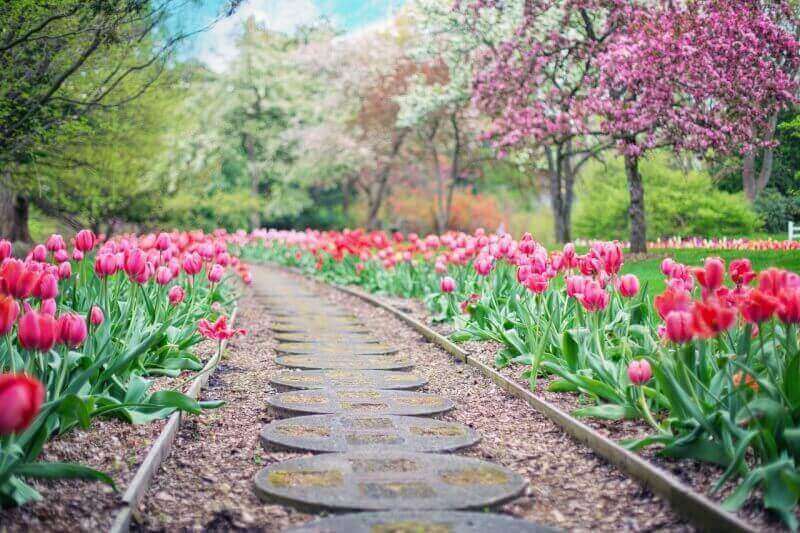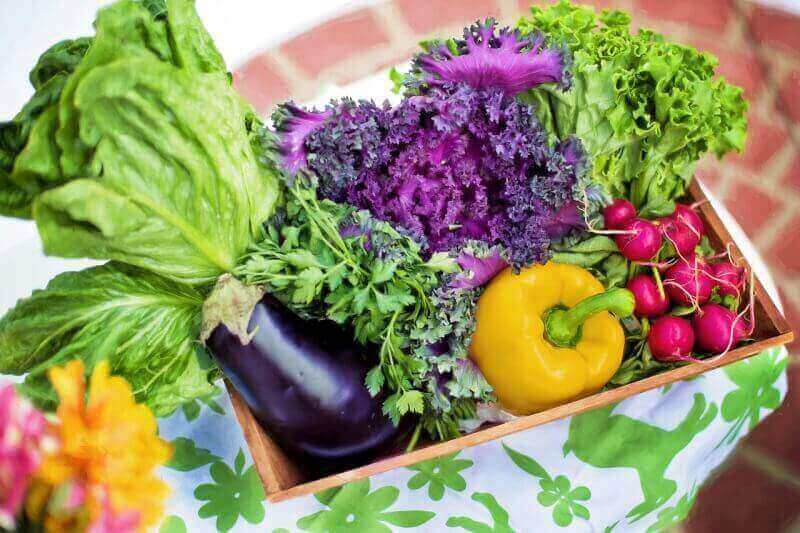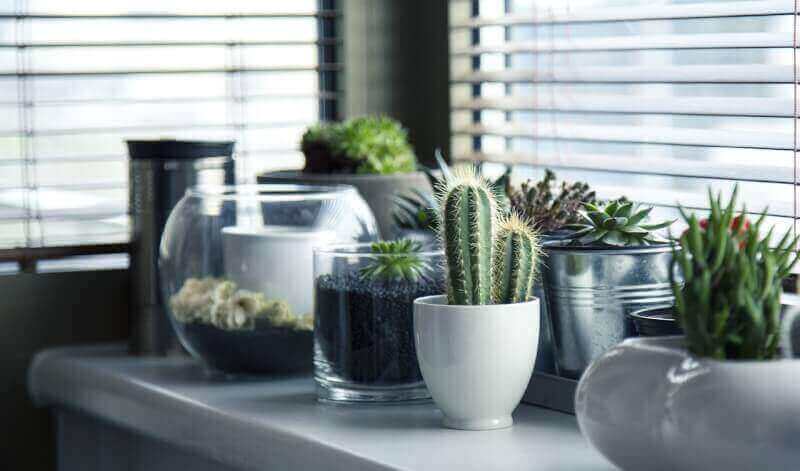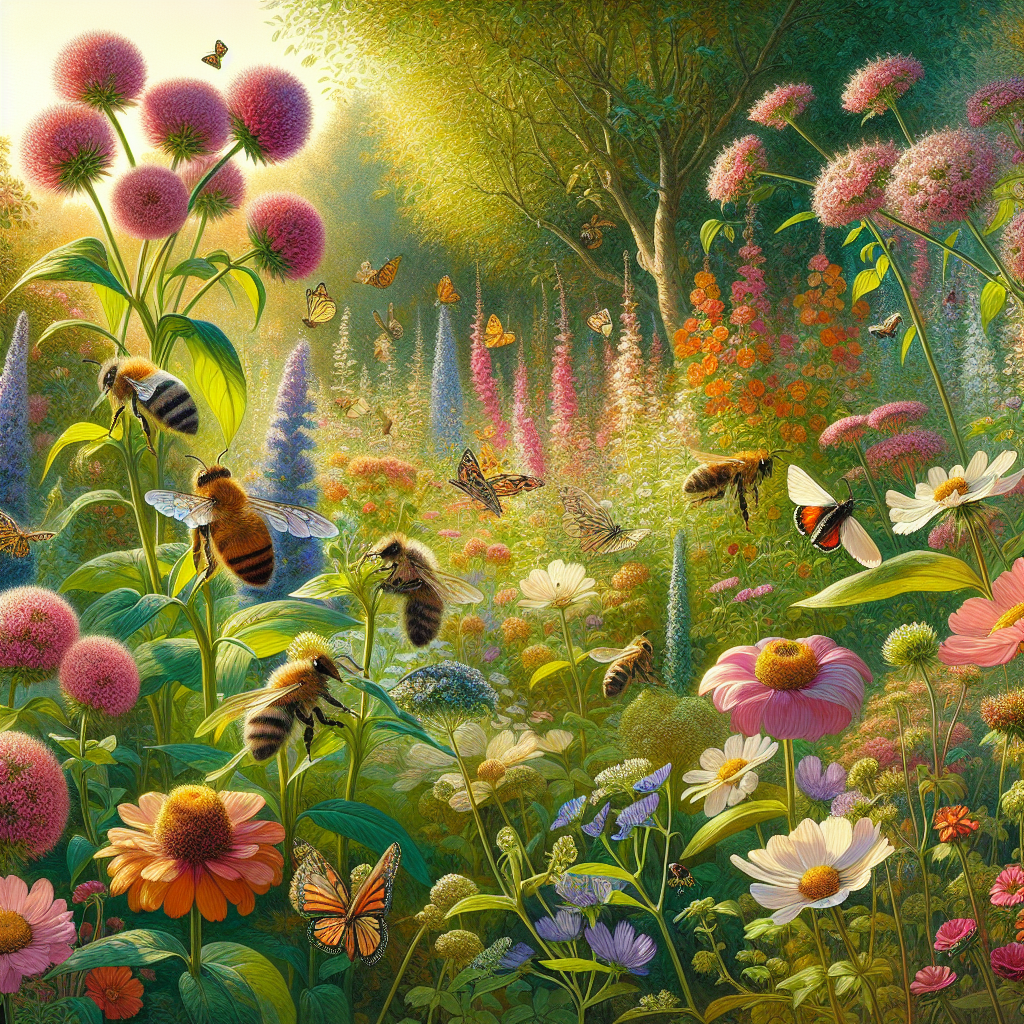👋 Click the mic button to talk to Alfred, the Todd's Seeds Gardening/Sprouting Expert – Feel free to ask him anything!
Ask Virtual Todd Anything - Click the Mic
If you’re an avid gardener looking to make your garden a buzzing hub of life, you may have pondered upon the question, “How do I attract pollinators to my garden?” Well, fret not! In this article, we will explore the fascinating world of pollinators and share some quick and simple tips to transform your garden into a paradise for these essential creatures. So put on your gardening gloves, grab a cup of tea, and get ready to learn how to entice and support the pollinators that play a crucial role in the beauty and abundance of your garden.

Choosing the Right Plants
When it comes to attracting pollinators to your garden, choosing the right plants is essential. Native plants are a great option as they have evolved with the local pollinators and provide a familiar food source. They also require less maintenance and are more resistant to diseases and pests. Flowering plants, in general, are highly attractive to pollinators as they provide nectar and pollen. Consider planting a variety of flowering plants to cater to different preferences and needs of various pollinators.
Native Plants
Native plants are the backbone of a pollinator-friendly garden. These plants have co-evolved with local pollinators and have adapted to the region’s climatic conditions. By planting native species, you provide a familiar habitat and food source for the pollinators in your area. Native plants also require less water, fertilizer, and pesticide use, making them a sustainable choice for your garden.
Flowering Plants
Flowering plants are like magnets for pollinators. The bright colors and sweet nectar of flowers attract bees, butterflies, hummingbirds, flies, and beetles. Choose a diverse range of flowering plants to cater to the preferences of different pollinators. From vibrant wildflowers to fragrant roses, there are numerous options to add a burst of color and life to your garden.
Variety of Flowering Times
To ensure a consistent food source for pollinators throughout the year, it is essential to include plants with varying flowering times. By selecting plants that bloom at different seasons, you can provide continuous nectar and pollen sources for pollinators. Early bloomers like snowdrops and crocuses are vital for emerging pollinators in the spring, while late bloomers like asters and sedums can sustain pollinators through the fall.
Grouping Plants
Grouping plants of the same species together in clusters can make it easier for pollinators to locate and access the flowers. It is also beneficial to create larger plantings of different species to offer a diverse array of nectar and pollen sources in one location. These groupings mimic natural habitats, making it easier for pollinators to navigate and find the resources they need.
Provide Shelter and Water
Creating habitat and providing necessary resources like nesting sites and water are crucial for attracting and supporting pollinators in your garden.
Creating Habitat
Enhance your garden by creating a suitable habitat for pollinators. Incorporate features like rock piles, logs, and native grasses to provide hiding places and shelter for various species. These features help create a diverse and inviting environment for pollinators to thrive.
Nesting Sites
Different pollinators require varying nesting sites. For example, solitary bees may need small tunnels in wood or clay, while butterflies lay eggs on specific host plants. Including a variety of plants that provide suitable nesting and egg-laying sites will attract a broader range of pollinators to your garden.
Water Sources
Pollinators need water to survive, so providing a water source is essential. Adding a shallow dish with water and small stones for perching can create a safe drinking spot for pollinators. Make sure to refill the water regularly to prevent it from becoming stagnant or a breeding ground for mosquitoes.
Avoid the Use of Chemicals
Using chemicals like pesticides and herbicides in your garden can be detrimental to pollinators. These substances can harm or kill pollinators directly or indirectly by contaminating their food sources. It is important to adopt organic gardening practices and seek natural alternatives to control pests and weeds.
Pesticides
Pesticides, especially insecticides, can be toxic to pollinators. Instead of resorting to chemical pesticides, try natural pest control methods like hand-picking pests, promoting beneficial insects, and practicing crop rotation. If necessary, choose targeted pesticides that specifically target the pests you are dealing with, rather than using broad-spectrum options that harm both pests and beneficial insects.
Herbicides
Herbicides designed to eliminate weeds can also harm pollinators. Many flowering plants that provide food for pollinators are considered weeds by conventional standards, so it is important to be selective when using herbicides. Consider hand-weeding or using organic mulches to control weeds and preserve the habitat for pollinators.

Create a Pollinator-Friendly Environment
To attract a wide range of pollinators to your garden, you need to create an environment that meets their specific needs.
Sun Exposure
Most pollinators prefer sunny locations, so ensure your garden receives adequate sunlight. Position your flowering plants, nesting sites, and water sources in areas that receive at least 6-8 hours of sunlight each day. However, it is also important to incorporate some shady spots for certain species, particularly butterflies, to rest and cool off during hot summer days.
Soil Quality
Good soil quality is crucial for healthy plant growth, which in turn supports pollinators. Ensure your garden soil is well-draining, fertile, and rich in organic matter. Test your soil and amend it as needed to provide optimal conditions for plant growth. Healthy plants produce more flowers, which means more nectar and pollen for pollinators.
Mulching
Using organic mulch in your garden has multiple benefits for pollinators. It helps retain moisture, suppress weeds, and improve soil fertility. Mulch also provides a cooler and more protected environment for ground-nesting bees and other pollinators. Choose mulches like wood chips or straw and avoid using synthetic materials that may contain harmful chemicals.
Know Your Pollinators
Understanding the different types of pollinators and their specific preferences can help you design a garden that caters to their needs.
Bees
Bees are essential pollinators for many plant species. They are attracted to brightly colored flowers, particularly shades of blue, purple, white, and yellow. Bees also prefer flowers with easily accessible nectar and a landing platform. Including plants like lavender, aster, and sunflowers can entice bees to visit your garden.

Butterflies
Butterflies are known for their love of vibrant colors. They are particularly attracted to bright red, orange, pink, and purple flowers. To attract butterflies, create a garden with a variety of host plants for caterpillars and nectar-rich flowers for adult butterflies. Examples of butterfly-friendly plants include milkweed, coneflower, and butterfly bush.
Hummingbirds
Hummingbirds are drawn to tubular-shaped flowers that contain ample amounts of nectar. Planting native species like trumpet vine, bee balm, and cardinal flower will catch the attention of these energetic pollinators. Including a hummingbird feeder in your garden can also provide an additional food source.
Flies
While some may find them pesky, certain flies like hoverflies and bee flies are important pollinators. These flies are attracted to modest, simple flowers that offer an abundant supply of pollen and nectar. Plants like yarrow, goldenrod, and tansy can entice various fly species to visit your garden.
Beetles
Although they may not be as commonly associated with pollination as bees or butterflies, beetles play a significant role in certain plant species’ pollination. Beetles are drawn to large, bowl-shaped flowers with strong scent, often in shades of white, cream, or green. Including plants like magnolia, coneflower, and daisy can attract beetles to your garden.
Planting Techniques
Knowing the best planting techniques can enhance the effectiveness of your pollinator-friendly garden.
Plant Diversity
Plant diversity is key when attracting pollinators. By including a wide range of flowering plants with varying heights, colors, and blooming periods, you can create a visually appealing and resource-rich garden that caters to different pollinator species. Aim for a mix of perennials, annuals, and herbs to ensure continuous blooms and a dynamic environment.

Color and Fragrance
Pollinators are highly attracted to bright colors and sweet fragrances. Incorporate a variety of colors in your garden, focusing on the hues preferred by different pollinators. Adding aromatic flowers like lavender, jasmine, and honeysuckle can further entice pollinators and create a delightful sensory experience.
Plant Heights
Planting flowers with different heights and growth habits can create a layered effect, providing a variety of foraging options for pollinators. Taller plants like sunflowers and hollyhocks can offer a focal point and attract larger bees and butterflies, while shorter plants like daisies and phlox can accommodate smaller pollinators.
Groupings and Clusters
Grouping plants together in clusters can make it easier for pollinators to navigate and locate the flowers they prefer. Clusters of the same species also provide a more efficient foraging site for bees and butterflies. By creating pockets of similar plants throughout your garden, you can maximize the attractiveness and functionality of your garden for pollinators.
Provide Food for Pollinators
To support pollinators in your garden, it’s crucial to provide reliable food sources throughout the seasons.
Nectar-Rich Flowers
Including nectar-rich flowers is the key to attracting and sustaining pollinators. Look for plants with long flowering periods and abundant nectar production. Examples of nectar-rich flowers include coneflowers, zinnias, salvia, and black-eyed Susans.
Shrubs and Trees with Berries or Fruits
Shrubs and trees that produce berries or fruits can provide a valuable food source for birds and certain pollinators. Consider adding native shrubs like elderberry or serviceberry, or fruit-bearing trees like apple or cherry, to further enhance the biodiversity and food availability in your garden.

Host Plants for Caterpillars
If you want to attract butterflies, it is crucial to provide host plants for their larvae, also known as caterpillars. Different butterfly species lay their eggs on specific plant species, which then serve as a food source for the emerging caterpillars. Research the specific host plants required by the butterfly species in your area and include them in your garden.
Use Attractive Features
Certain features in plants can make them more visually appealing and enticing for pollinators.
Bright Colors
Pollinators are attracted to bright, vibrant colors, especially shades of blue, purple, and yellow. Including flowers with these hues will catch the attention of bees, butterflies, and other pollinators, making your garden a vibrant and joyful haven.
Irregularly-Shaped Flowers
Certain pollinators, like bees, are more attracted to irregularly-shaped flowers. Flowers with unique structures or unusual petal arrangements can provide hidden nectar or pollen, making them irresistible to pollinators. Examples of such flowers include snapdragons, foxgloves, and orchids.
Flower Fragrance
The sweet fragrance of flowers can be a powerful lure for pollinators, particularly moths and butterflies. Including flowers with strong, pleasant scents can create an aromatic garden that attracts pollinators from afar. Consider adding fragrant plants like jasmine, lilac, and roses to enhance your garden’s appeal.
Maintaining the Garden
The upkeep of your garden is just as crucial as its initial design when it comes to maintaining a pollinator-friendly environment.
Weeding and Pruning
Regular weeding is essential to minimize competition for resources and reduce the risk of invasive plant species taking over. However, it is important to leave some “weeds” that may actually be beneficial wildflowers for pollinators. Pruning, on the other hand, helps control the size and shape of plants while promoting healthy growth and blooming.
Deadheading
Deadheading refers to the removal of spent flowers from plants. This practice not only keeps your garden looking tidy but also encourages continuous blooming. By removing faded flowers, you allow energy to be directed towards new growth and subsequent flowering, ensuring a consistent food source for pollinators.
Keeping Pollinators in Mind
When tending to your garden, always keep the needs of pollinators at the forefront. Avoid using pesticides or herbicides that may harm these beneficial creatures. Instead, opt for organic pest control methods and natural weed management techniques. Be mindful of the timing and intensity of maintenance activities to minimize disruption to pollinators’ foraging and nesting habits.
Additional Tips
Consider these additional tips to create a thriving pollinator-friendly garden.
Create Variety in Different Garden Areas
By creating different garden areas with varying sun exposures, soil conditions, and plant selections, you can attract a wide range of pollinators. These distinct areas can include sunny flower beds, shady woodland corners, or even a small water feature. Each area can cater to the specific needs and preferences of different pollinator species, resulting in a more diverse and dynamic garden.
Consider Weather Conditions
Planting a mix of early, mid, and late blooming flowers ensures a continuous supply of nectar and pollen throughout the changing seasons. By selecting plants that are adapted to your climate and bloom during different weather conditions, you provide sustenance for pollinators even during unexpected weather fluctuations.
Continuous Blooms During Seasons
To maintain a flourishing pollinator-friendly garden, strive for continuous blooms throughout the seasons by carefully selecting plants with overlapping flowering periods. By offering a consistent food source from early spring to late fall, you can support pollinators during their active periods and encourage them to frequent your garden.
Attracting pollinators to your garden is not only an act of environmental stewardship but also a rewarding and enchanting experience. By choosing the right plants, providing essential resources, avoiding chemical use, creating a pollinator-friendly environment, and understanding the needs of different pollinators, you can create a vibrant haven that supports these important creatures. Remember to invest time in maintaining your garden, incorporating attractive features, and providing a continuous food supply to ensure a thriving pollinator population. With these tips in mind, your garden can become a pollinator paradise and a sanctuary for these vital contributors to our ecosystems.